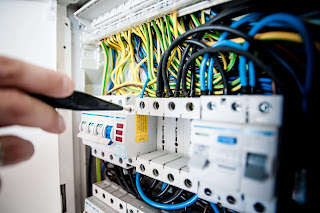The weather is changing, and power outages are unavoidable. Maybe someone told you about whole-house surge protector and you're curious. Indeed, you should be. Because it can save your time and money in the long run.
Whole-home surge protection (SPD) is a device that connects to your home's electrical panel. It functions similarly to a filter, allowing safe electrical current to pass through while preventing dangerously excessive current or voltage from entering your home's electrical system. When an SPD detects an electrical surge, it promptly reacts by diverting the excess current/voltage through a ground line to the ground.
SPDs protect your home's valuable electrical equipment from overheating and, in certain situations, triggering electrical fires, by stopping electrical surges.
The question then arises, what is it that produces electrical surges in the first place? An electrical surge can be caused by any of the following scenarios:
- A total blackout
- Downed electricity lines
- Lightning strikes in the vicinity
- Wiring that has been damaged
- On and off cycles of large appliances in the house.
It's not usual to see the first 4 of those eventualities, but the last one is common. Occasionally, when big machines with motors start-up or stop, they send or take electricity away from other appliances. This is called "internal surge."

Approximately 60 to 80 percent of all residential surges are caused by internal surges, according to the NEMA (National Electrical Manufacturers Association). Internal surges can ultimately kill your electrical appliances—that is unless you have a whole-home surge protector.
Pros of whole House surge protector
Modern homes contain a greater number of electrical devices than ever before. As a result, your house probably contains dozens of high-priced microprocessors that are vulnerable to power spikes.
When you install a whole-house surge protector, you are installing a highly effective device that reacts in less than a nanosecond to divert excess current or voltage during a power surge. This keeps unsafe voltage or current levels out of your home, preventing them from harming your equipment.
A power surge can cost you a lot of money in the form of damaged electronics, as well as damage to your home's electrical system. There is even more bad news: Most home insurance policies don't cover damage caused by electrical surges.
Installing a whole-house surge protector, on the other hand, eliminates this costly scenario entirely, providing you complete peace of mind that both your home and your money are safe.
Cons of whole House surge protector
Installing a surge protector might be an expensive investment. The device, as well as professional installation, can cost anywhere from $500 to $800 depending on the type and brand of the surge protector and your home's electrical and wiring arrangement.
Consider the fact that this is a one-time expenditure. When you install a whole-home surge protector, think about how many power surges you won't have to deal with and how much money you could save on electrical damage.
When it comes to whole-house surge protectors, they are meant to let through surges that don't reach a certain voltage level. Each whole-home surge protector is labeled with a "VPR" (voltage protection rating), which indicates the maximum voltage that the surge protector will allow to pass through to your home's electrical system.






0 Comments
For comments please reply here.......